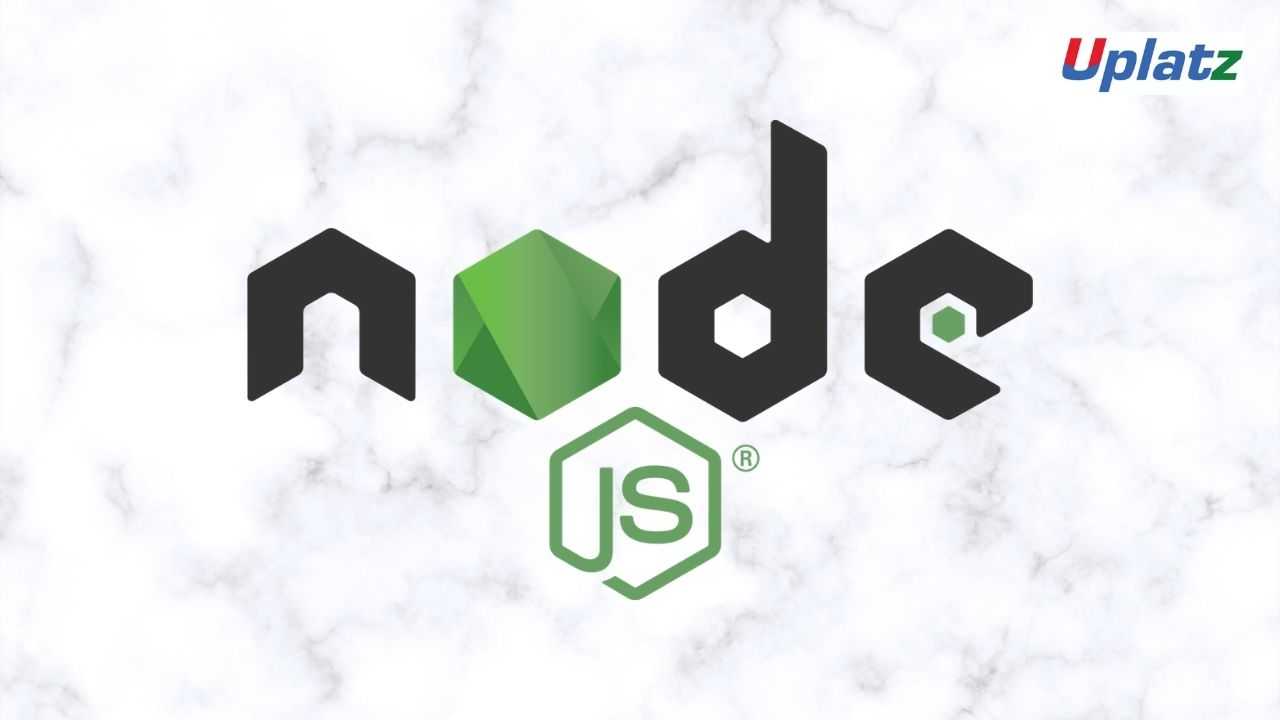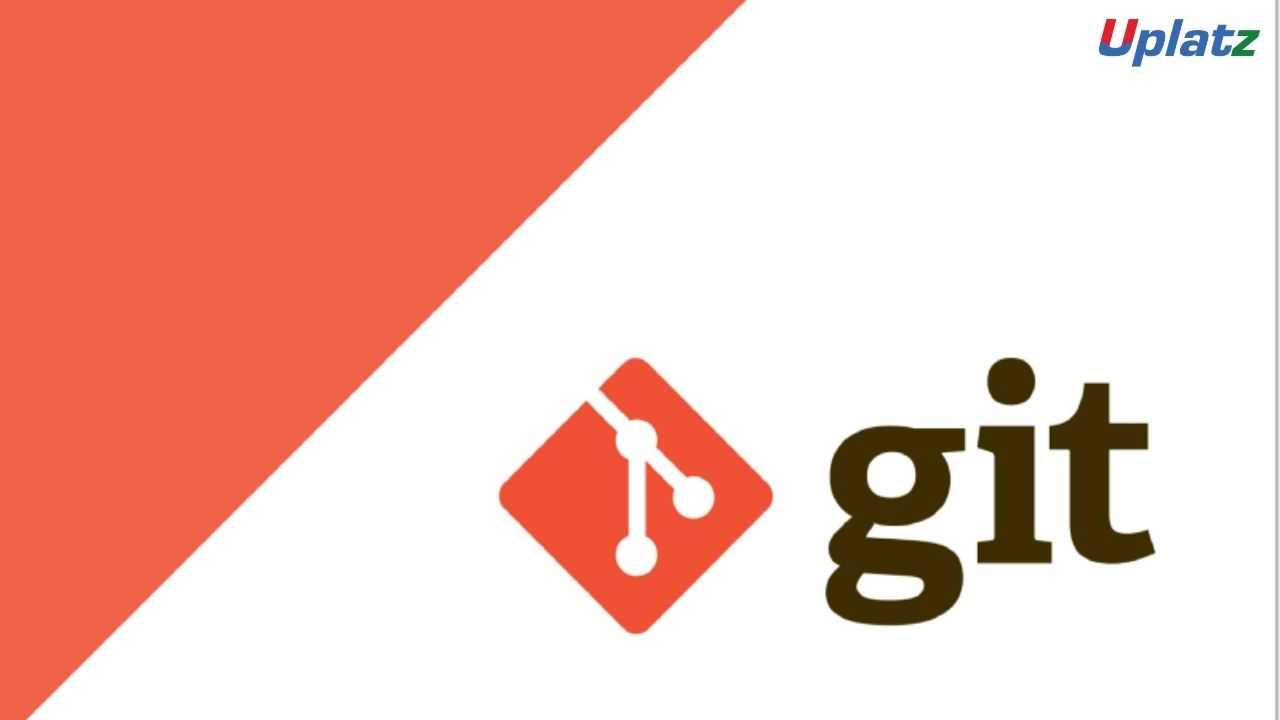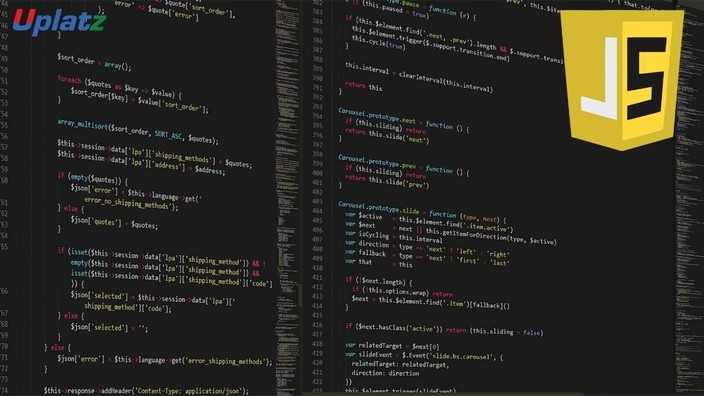MongoDB
Learn how MongoDB integration with Java and Jaspersoft, Working with unstructured data like images, videos, and log data, and more.Preview MongoDB course
View Course Curriculum Price Match Guarantee Full Lifetime Access Access on any Device Technical Support Secure Checkout Course Completion Certificate 70% Started a new career
BUY THIS COURSE (GBP 29)
70% Started a new career
BUY THIS COURSE (GBP 29)
-
 79% Got a pay increase and promotion
79% Got a pay increase and promotion
Students also bought -
-

- Node.js
- 21 Hours
- GBP 29
- 1896 Learners
-

- Git and GitHub
- 5 Hours
- GBP 29
- 353 Learners
-

- JavaScript Programming
- 35 hours
- GBP 29
- 518 Learners

MongoDB is one of the most widely used NoSQL tools in the Big Data domain. MongoDB is a distributed database at its core, so high availability, horizontal scaling, and geographic distribution are built in and easy to use.
MongoDB is a document-oriented NoSQL database used for high-volume data storage. It contains the data model, which allows you to represent hierarchical relationships. It uses JSON-like documents with optional schema instead of using tables and rows in traditional relational databases. Documents containing key-value pairs are the basic units of data in MongoDB. MongoDB’s application data platform provides developers a unified interface to power operational and transactional database requirements plus search, real-time and data lake applications needs. This enables developers to move fast and simplify how they build with data for almost any class of application. MongoDB is a non-relational document database that provides support for JSON-like storage. The MongoDB database has a flexible data model that enables you to store unstructured data, and it provides full indexing support, and replication with rich and intuitive APIs.
This MongoDB training by Uplatz will help you master the leading document-oriented NoSQL database, MongoDB Architecture, CRUD, Schema Design, Data Modelling and Indexing using real-life case studies along with an understanding of NoSQL databases, design goals, requirement of NoSQL database/ MongoDB, MongoDB architecture and introduction to JSON and BSON among others.
Some of the topics that are included in this MongoDB training are installation of MongoDB, JSON, data modelling and schema design. You will also gain enough expertise in the framework of data monitoring, indexing and aggregation. Key lectures under this MongoDB training are: Introduction to NoSQL database system, Implementation of JSON/BSON data types, Scope of NoSQL in real-world scenarios, Installation of MongoDB and associated tools, Concept of Sharding to learn scalability and availability, Performing CRUD operations to design schemas, Stack, Merge, and Strsplit functions and implementation, Data management using MongoDB, Database security risk and MongoDB security approach, MongoDB integration with Java and Jaspersoft, Working with unstructured data like images, videos, and log data, and more.
Course/Topic 1 - Introduction - Installation - Configuration - all lectures
-
Topics covered in this video: a) Introduction & Basics, b) Installation and configuration, c) CRUD Operations (Create and Insert), d) MongoDB Advantages .......... Objectives of this video: a) What is MongoDB, b) How MongoDB can be installed in Local Machine, c) Basic CRUD operations (Create & Read).
Course/Topic 2 - CRUD Operations - all lectures
-
Topics covered in this video: a) CRUD Operations (Update and Delete), b) Data Modeling, c) Model Tree Structure, d) Schema Validation .......... Objectives of this video: a) CRUD operation (Write & Delete), b) How to work with Reference and Embedded Data Modeling, c) Advantages over Data Modeling, d) How to find relationship between Parent, Child & Ancestors in Data, e) How to validate our data for Large Scale Application?
Course/Topic 3 - Views in MongoDB - all lectures
-
Topics covered in this video: a) Views, b) On-Demand Materialized Views, c) Capped Collections, d) Text Search .......... Objectives of this video: a) How to create Views and Advantages over that, b) Difference Between Views and Collection, c) What is Capped Collection, d) How the Text Search is working in collection?
Course/Topic 4 - Database References - Write Concern - Aggregation - all lectures
-
Topics covered in this video: a) Database References, b) Write Concern, c) Aggregation, d) Query and Projection Operators (Comparison Query Operator Introduction) .......... Objectives of this video: a) How to use Database Reference? b) What is write Concern in MongoDB? c) What is Query Projection Operators and its types?
Course/Topic 5 - Operators in MongoDB - all lectures
-
Topics covered in this video: a) Query and Projection Operators, b) Comparison Query Operators, c) Logical Query Operators .......... Objectives of this video: a) Types of Query Projection Operations in brief? b) Behavior and Usage in Collection?
-
Topics covered in this video: a) Query and Projection Operators, b) Evaluation Query Operators, c) Array Query Operators, d) Update Operators .......... Objectives of this video: a) How to handle collection with Array In Operators? b) Introduction to Update Operator.
Course/Topic 6 - Update Documents - all lectures
-
Topics covered in this video: a) Update Documents, b) Field Update Operator, c) Array Update Operator .......... Objectives of this video: a) How to update the Embedded Field and Array Field in Collection?
Course/Topic 7 - Introduction to mongo Shell - all lectures
-
Topics covered in this video: a) ArrayUpdate Documents, b) Bitwise Update Operator, c) mongo Shell Methods (Introduction) .......... Objectives of this video: a) How to use Bitwise Operator in MongoDB? b) Introduction to mongo Shell Methods.
Course/Topic 8 - Methods in MongoDB - all lectures
-
Topics covered in this video: a) mongo Shell Methods, b) Collection Methods .......... Objectives of this video: a) What is Collection Methods and its usage?
-
Topics covered in this video: a) Cursor Methods, b) Database Methods .......... Objectives of this video: a) What is Cursor Methods and its usage? b) What is Database Methods and its usage?
-
Topics covered in this video: a) Bulk Operation Methods, b) Indexes, c) Storage .......... Objectives of this video: a) How we can do Bulk Operations with various Methods? b) What is Indexing? c) How is Storage in MongoDB?
Course/Topic 9 - Replication in MongoDB - all lectures
-
Topics covered in this video: a) Replication, b) Replication Set Members, c) Replication Data Availability .......... Objectives of this video: a) Introduction to Replication? b) How to check the data availability for replica set members?
-
Topics covered in this video: a) Replication Set Deployment, b) Member Configuration Deployment, c) Export and Import Files .......... Objectives of this video: a) How to deploy the replication in local environment? b) How to configure the replica members? c) How to export and import json or csv file to mongo?
Course/Topic 10 - Sharding - all lectures
-
Topics covered in this video: a) Sharding .......... Objectives of this video: a) What is Sharding? b) Explain the usage of Sharding in brief.
Course/Topic 11 - Administering MongoDB - all lectures
-
Topics covered in this video: a) MongoDB Administration, b) MongoDB Back Methods .......... Objectives of this video: a) What is Administration in MongoDB and how it is done? b) How to set Profiling in mongo?
Course/Topic 12 - Interview Questions - MongoDB - all lectures
-
Topics covered in this video: a) Practical session on MongoDB .......... Objectives of this video: a) Practical session on MongoDB with operators and CRUD operations.
-
Topics covered in this video: a) Interview Questions and FAQs on MongoDB .......... Objectives of this video: a) Popular Interview Questions and Answers on MongoDB and Frequently Asked Questions.
Course/Topic 13 - Practical Demo - MongoDB - all lectures
-
Topics covered in this video: a) Practical session on MongoDB .......... Objectives of this video: a) Practical session on MongoDB with operators and CRUD operations.
• Gain insight into the 'Roles' played by MongoDB® experts.
• Learn how to design Schema using Advanced Queries.
• Troubleshoot Performance issues.
• Understand MongoDB® Aggregation framework.
• Learn MongoDB® Backup and Recovery options and strategies.
• After completing this module, you should be able to:
• Differentiate database categories
• Learn MongoDB design goals
• List MongoDB tools
• Describe JSON and BSON
• Install MongoDB on Windows, Linux, MAC OS etc.
• Setup MongoDB environment
Introduction to NoSQL Architecture with MongoDB
· What Is MongoDB?
· Downloading the required Software
· Installation and Configuration
· MongoDB Advantages
· MongoDB Data Modelling
· MongoDB Tools, Collection and Documents
· Configuration Files
· Touring the File Structure
· Securing the Installation
CRUD and the MongoDB Shell
· Introduction to CRUD
· Introduction to the MongoDB API
· Creating a Database, Collection and Documents
Data Modelling and Schema Design
· MongoDB Database References
· Model Tree Structures
· MongoDB Analyzing Queries
· MongoDB Atomic Operations
· MongoDB Map Reduce
· MongoDB Text Search
· MongoDB Regular Expression
· MongoDB Capped Collections
· Data Storage
· Working with Datatypes
· Collections
· Document Datatypes
· Creating _id Fields
Querying Data
· Databases and Collections
· Querying Collections
· Working with Operators
· Referencing a Database
· Querying Dates
Manipulating Data
· Inserting Data into Collections
· Updates
· Deletes
· Atomic Operations
· Removing Data
· Capped Collections
High-Performance Options
· Creating Indexes
· Manipulating Index Behaviour
· Index Properties
· Specialised Index Types
· Replication
· Sharding
Aggregation Framework
· Aggregating Results
· Single Purpose Functions
· The Aggregation Pipeline
· Date Aggregation Operators
Indexing
· Indexing and Aggregation
· Indexing, query profiling and the query optimizer
· Geospatial Indexes
· Index types, Index Properties
· MongoDB Advanced Indexing
· MongoDB Indexing Limitations
· Aggregation Introduction
Replication
· Replication Concept
· Failover & Recovery
Administration
· MongoDB Deployment and Cluster setup
· MongoDB GridFS
· Trident Spout
· Working with Replica Sets
· MongoDB Sharding
· MongoDB Create Backup
Using an API
· Introducing Drivers
· Java
· PHP
· Ruby
· Python
This MongoDB training course will help the participant to master the No-SQL database. As a part of this MongoDB training, the participants will master the popular document-oriented No-SQL tool.
In MongoDB Course, the participants will understand that No-SQL tool is most widely used in large data domain. In the MongoDB course, the participants will learn about MongoDB architecture, CRUD, Schema design, data modeling and other concepts.
With this training, a MongoDB Developer will get trained in NO-SQL database system, JSON/BSON data types, and the scope of No-SQL in real-world scenarios. MongoDB tutorial helps the participants to fulfil the role of a MongoDB Developer. MongoDB training course requires none of prerequisite or basic knowledge about database programming.
MongoDB is a No-SQL language that an emerging developer need to know well. The MongoDB training course from Uplatz can help the participants to understand the importance of NoSQL in a real-time project. The MongoDB Developer training course validates whether the participants has proven basic knowledge in NoSQL database and its architecture. The MongoDB Developer training helps the participants to manage data using MongoDB.
Uplatz online training ensures the participants to successfully go through the MongoDB training course. Uplatz provides appropriate teaching and expertise training is provided to equip the participants for implementing the learnt concepts in an enterprise.
Course Completion Certificate will be awarded by Uplatz upon the completion of the MongoDB course training.
The MongoDB Developer draws an average salary of $111,436 per year depending on the knowledge and hands-on experience. The MongoDB Developer job roles are in high demand and make a promising career.
The MongoDB Developers have huge demand across various MNCs. The adoption of NoSQL tool in various companies can open up good job opportunities. The leading companies hire MongoDB Developer considering their mastery of MongoDB and its features.
The MongoDB course is ideally designed for programmers and those who aspire to build their career in database programming.
After pursuing MongoDB course the participants can pursue a wide range of career paths.
The following are the job titles:
· MongoDB Programmer
· MongoDB Developer
· MongoDB Software Engineer
· Full Stack Web Developer
· Data Engineer
· Big Data Developer
· Database Developer/Administrator
MongoDB Training course is worth for any developers who want to improve their big data processing and programming skills.
1) Explain what is MongoDB?
Mongo-DB is a document database which provides high performance, high availability and easy scalability.
2) What is "Namespace" in MongoDB?
MongoDB stores BSON (Binary Interchange and Structure Object Notation) objects in the collection. The concatenation of the collection name and database name is called a namespace.
3) What is sharding in MongoDB?
The procedure of storing data records across multiple machines is referred as Sharding. It is a MongoDB approach to meet the demands of data growth. It is the horizontal partition of data in a database or search engine. Each partition is referred as shard or database shard.
4) How can you see the connection used by Mongos?
To see the connection used by Mongos use db_adminCommand (“connPoolStats”);
5) Explain what is a replica set?
A replica set is a group of mongo instances that host the same data set. In replica set, one node is primary, and another is secondary. From primary to the secondary node all data replicates.
6) How replication works in MongoDB?
Across multiple servers, the process of synchronizing data is known as replication. It provides redundancy and increase data availability with multiple copies of data on different database server. Replication helps in protecting the database from the loss of a single server.
7) While creating Schema in MongoDB what are the points need to be taken in consideration?
Points need to be taken in consideration are
- Design your schema according to user requirements
- Combine objects into one document if you use them together. Otherwise, separate them
- Do joins while write, and not when it is on read
- For most frequent use cases optimize your schema
- Do complex aggregation in the schema
8) What is the syntax to create a collection and to drop a collection in MongoDB?
- Syntax to create collection in MongoDB is db.createCollection(name,options)
- Syntax to drop collection in MongoDB is db.collection.drop()
9) Explain what is the role of profiler in MongoDB?
MongoDB database profiler shows performance characteristics of each operation against the database. You can find queries using the profiler that are slower than they should be.
10) Explain can you move old files in the moveChunk directory?
Yes, it is possible to move old files in the moveChunk directory, during normal shard balancing operations these files are made as backups and can be deleted once the operations are done.
11) To do safe backups what is the feature in MongoDB that you can use?
Journaling is the feature in MongoDB that you can use to do safe backups.
12) Mention what is Objecld composed of?
Objectld is composed of
- Timestamp
- Client machine ID
- Client process ID
- 3 byte incremented counter
13) Mention what is the command syntax for inserting a document?
For inserting a document command syntax is database.collection.insert (document).
14) Mention how you can inspect the source code of a function?
To inspect a source code of a function, without any parentheses, the function must be invoked.
15) What is the command syntax that tells you whether you are on the master server or not? And how many master does MongoDB allow?
Command syntax Db.isMaster() will tell you whether you are on the master server or not. MongoDB allows only one master server, while couchDB allows multiple masters.
16) Mention the command syntax that is used to view Mongo is using the link?
The command syntax that is used to view mongo is using the link is db._adminCommand(“connPoolStats.”)
17) Explain what are indexes in MongoDB?
Indexes are special structures in MongoDB, which stores a small portion of the data set in an easy to traverse form. Ordered by the value of the field specified in the index, the index stores the value of a specific field or set of fields.
18) Mention what is the basic syntax to use index in MongoDB?
The basic syntax to use in MongoDB is >db.COLLECTION_NAME.ensureIndex ( {KEY:1} ). In here the key is the the name of the COLUMN (or KEY:VALUE pair) which is present in the documents.
19) Explain what is GridFS in MongoDB?
For storing and retrieving large files such as images, video files and audio files GridFS is used. By default, it uses two files fs.files and fs.chunks to store the file’s metadata and the chunks.
20) What are alternatives to MongoDB?
Cassandra, CouchDB, Redis, Riak, Hbase are a few good alternatives.









